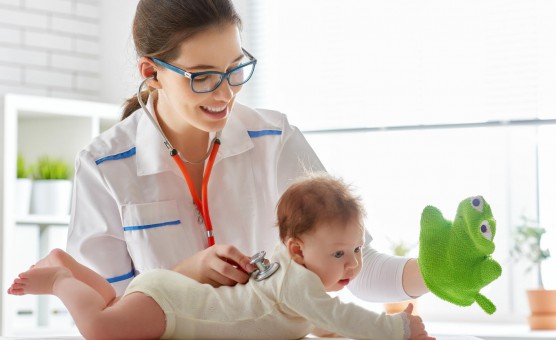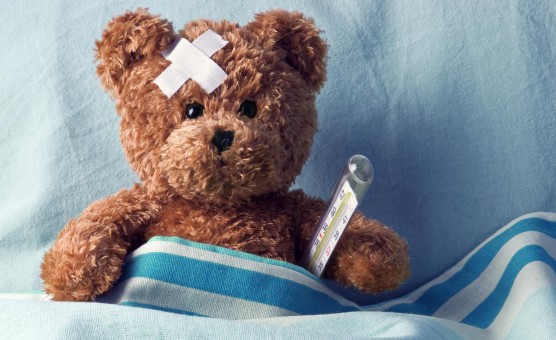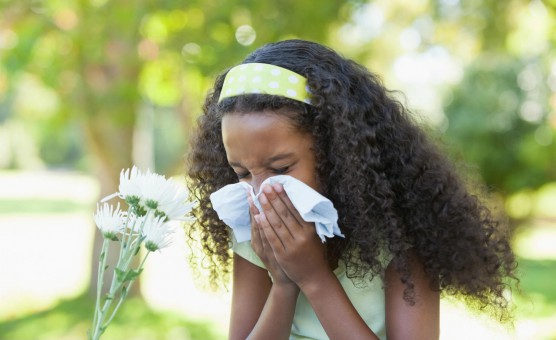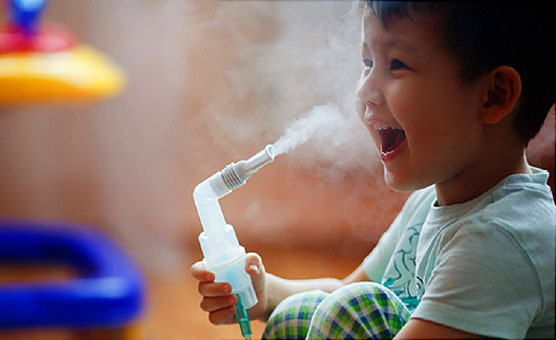
Well-Baby Visits
The cornerstone of child care
Parents know who they should go to when their child is sick. But pediatrician visits are just as important for healthy children.
The Benefits of Well-Child Visits:
- Prevention. Your child gets scheduled immunizations to prevent illness. You also can ask your pediatrician about nutrition and safety in the home and at school.
- Tracking growth and development. See how much your child has grown in the time since your last visit, and talk with your doctor about your child’s development. You can discuss your child’s milestones, social behaviors and learning.
- Raising concerns. Make a list of topics you want to talk about with your child’s pediatrician such as development, behavior, sleep, eating or getting along with other family members. Bring your top three to five questions or concerns with you to talk with your pediatrician at the start of the visit.
- Team approach. Regular visits create strong, trustworthy relationships among pediatrician, parent and child. This team approach helps develop optimal physical, mental and social health of a child.

Dealing with common childhood ailments
From babies to adolescents
Being sick is part of childhood, and caring for a sick child is part of being a parent. But you might worry about a rash or wonder if a cough is getting worse. Many of the diseases listed below spread easily between family members, at day-care centres and at schools. Thankfully, some of them are preventable with immunisation.
- Chickenpox
- Coughs, colds and ear infection in children
- Croup
- Diarrhoea and vomiting in children
- Fever in children
- Food allergies in children
- Measles
- Rubella
- Whooping cough

Management of day to day Paediatric and Neonatal Emergencies
Let's spot and treat them!
Management of a critically ill neonate in the emergency department (ED) is challenging. The evaluation and appropriate management of the ill neonate requires a deep knowledge of the physiologic changes and life-threating pathologic conditions that may present during this time. Most visits to an ED will be because of nonserious diseases, mainly because of insufficient caretaker information. Young neonates (less 10 days old) who present to the ED have a particularly high incidence of serious illness, with 10% to 33% requiring hospital admission. A broad systematic approach is necessary, to provide a comprehensive and specific assessment for the presenting symptom. The early diagnosis and management may be life saving. The new change policies in the early discharge of the neonates from the newborn nurseries ensure the necessity of the emergency physician to know the numerous clinical situations.

Vaccinations as per IAP Schedule
Getting your child vaccinated on time will help protect him or her against 15 vaccinepreventable diseases.Immunization or vaccination is introduction of a small amount of viruses/bacteria in the human body to stimulate the immune system to make antibodies against them.
To check the Vaccination Timetable, Please click here.

New Born Examinations
The doctor usually gives the newborn a thorough physical examination within the first 24 hours of life. The examination begins with a series of measurements, including weight, length, and head circumference. The average weight at birth is 2.5kg, and the average length is 20 inches, although there is a wide range that is considered normal. Then the doctor examines the newborn’s skin, head and neck, heart and lungs, and abdomen and genitals and assesses the newborn’s nervous system and reflexes. Doctors also routinely do screening tests to detect problems they cannot see during the physical examination

Nebulization Therapy
Nebulization is the process of medication administration via inhalation. It utilizes a nebulizer which transports medications to the lungs by means of mist inhalation.
Nebulization therapy is used to deliver medications along the respiratory tract and is indicated to various respiratory problems and diseases such as:
- Broncho-spasms
- Chest tightness
- Excessive and thick mucus secretions
- Respiratory congestions
- Pneumonia